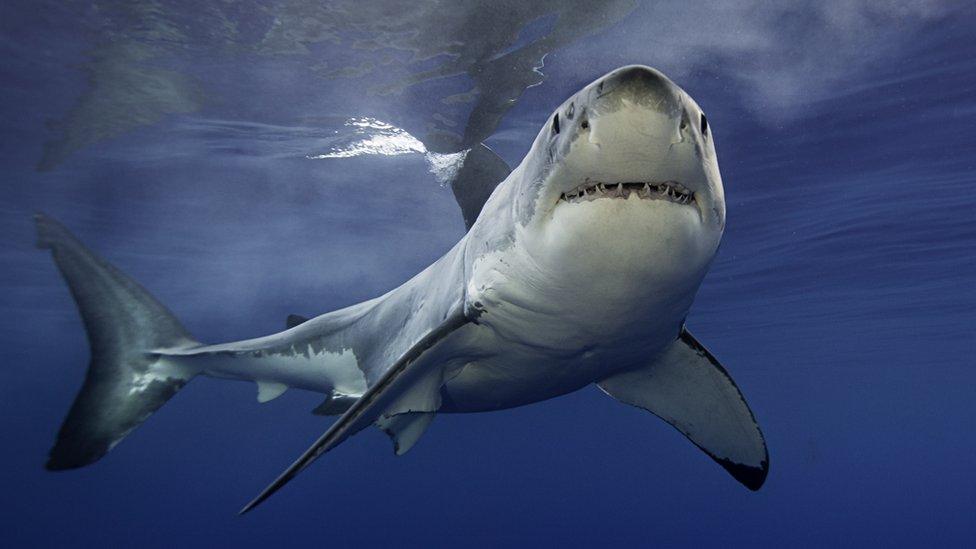Mammal migration: New global map shows how it's changing
- Published
- comments
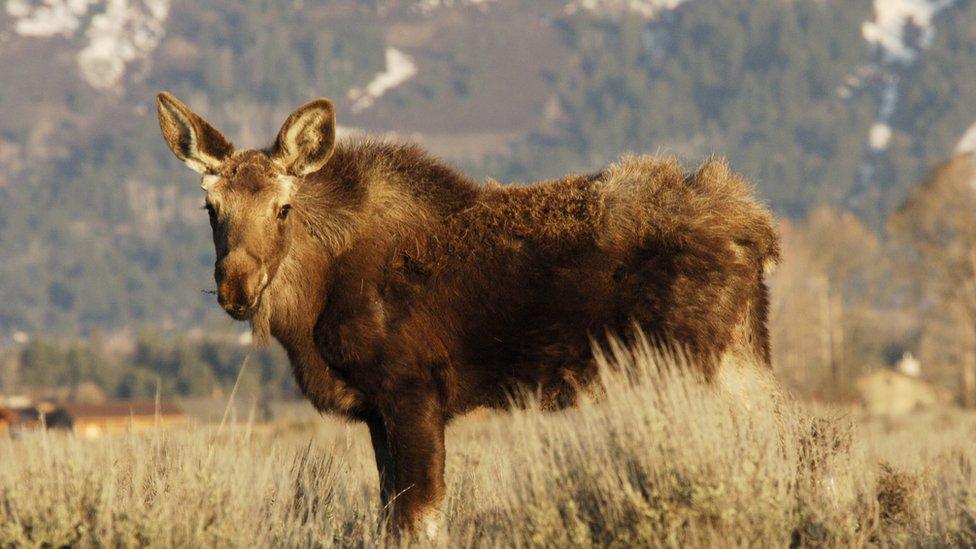
A moose in the wild
The Wildlife Conservation Society (WCS) along with an international team of more than 90 scientists have created the first-ever global atlas of hoofed mammal migrations.
The team have produced detailed maps which show how many long-distance migrations have been lost from all continents.
However, new information gathered on existing migrating mammals also shows how numerous species continue to move around the world.
The mapping offers conservationists and governments the opportunity to work with local people to help protect the animals.

The new map helps track the migration of South America's guanaco
What else do we know?
The movements of hoofed mammals are often in remote areas, and include familiar species like elephants and caribou, but also lesser known species such as Asia's saiga, Mongolian gazelles, and South America's guanaco.
"A global migration atlas is urgently needed because there has never been a worldwide inventory of these phenomenal seasonal movements," said lead author Matthew Kauffman, a wildlife biologist with the U.S. Geological Survey.
"As landscapes become more difficult to traverse, the maps can help conservationists pinpoint threats," he added.
Some animals migrate (usually in different seasons throughout the year) to find food, escape extreme weather or find a place to breed their young.
Why is hoofed mammal migration important?
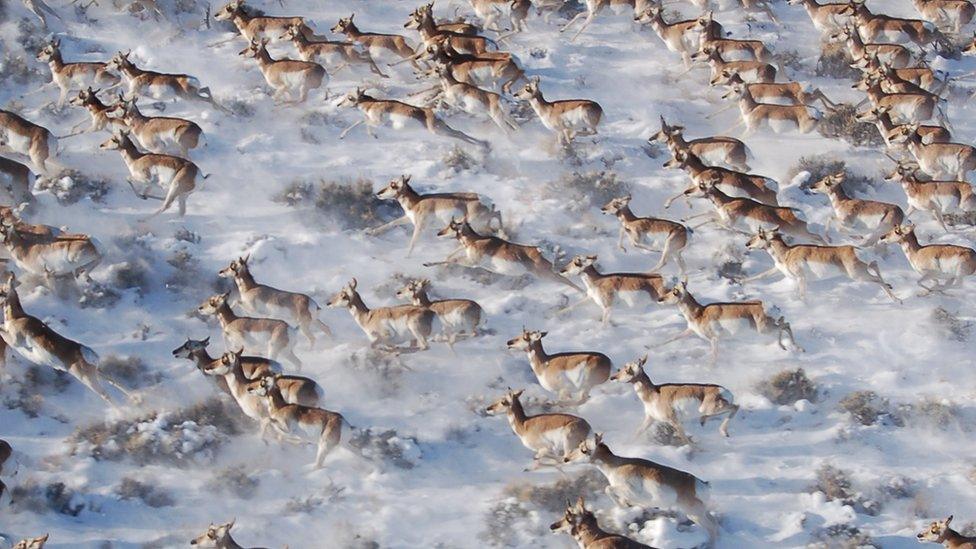
Pronghorn migration
Migratory mammals are an important part of the earth's ecosystems and provide much of the prey for the world's carnivores.
The migrations also contribute to local and regional economies through harvest and tourism, and play a significant role in the culture of numerous communities.
Many hoofed migrations are in steep decline due to human activity like roads, fences, and other types of development - which are expanding in many of the landscapes required by migrating herds.
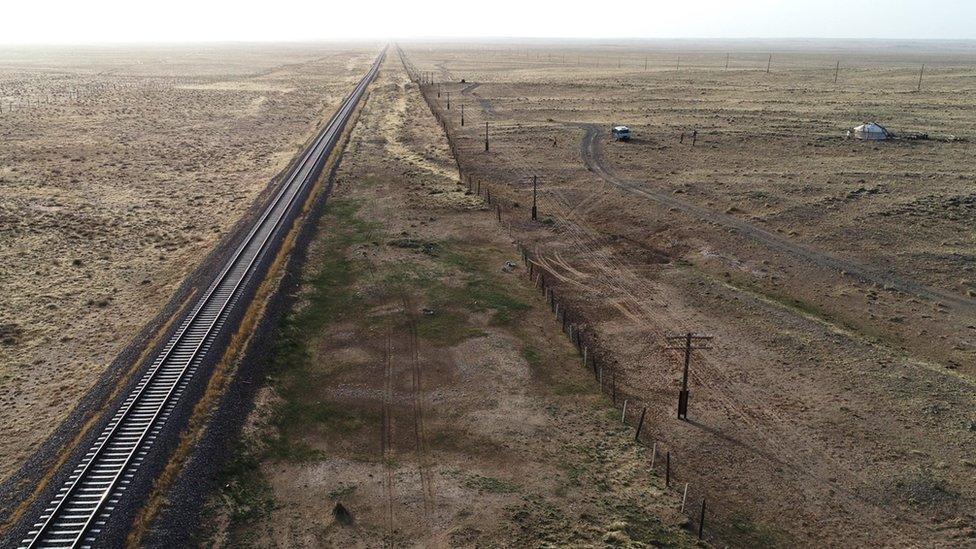
The Trans-Mongolia railroad is restricting the migration of gazelles
For example, the current migrations of Mongolian gazelles, where individuals roam over hundreds of kilometres, are being cut off by border fences and new railroads.
Researchers in Kenya's Kajiado County have also witnessed the near collapse of the migrations of wildebeest, zebra, and Thompson's Gazelle due to unplanned roads, fences, and other infrastructure.
In some cases, migrations have been lost even before they have been documented, highlighting the scale of the conservation challenge.
Is climate change affecting migration?
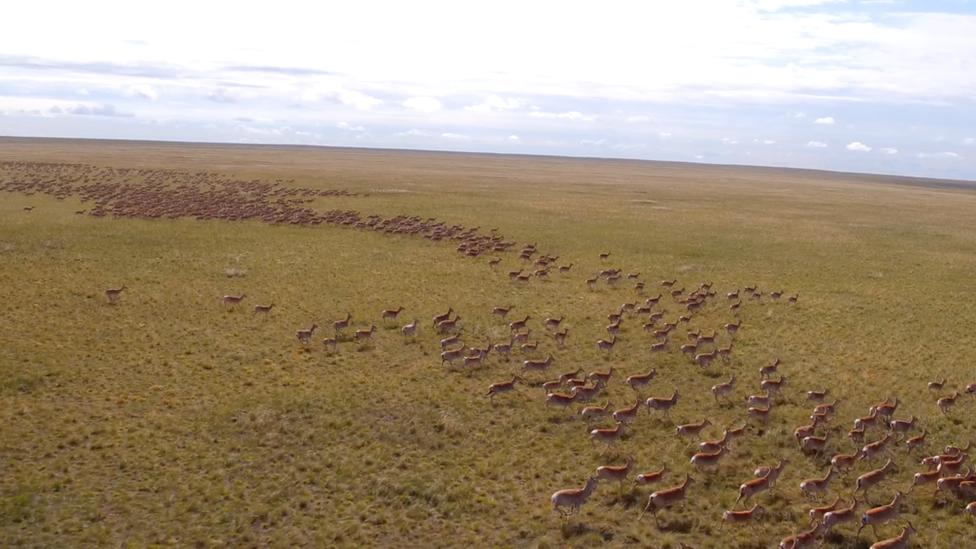
Mongolian gazelles' migration is being disturbed
As well as human activity, the climate crisis is also disturbing migration patterns.
Climate change is altering the distribution of water, snow, ice and plants, which effects how migratory herds time and navigate their seasonal movements.
What's being done to tackle the issue?
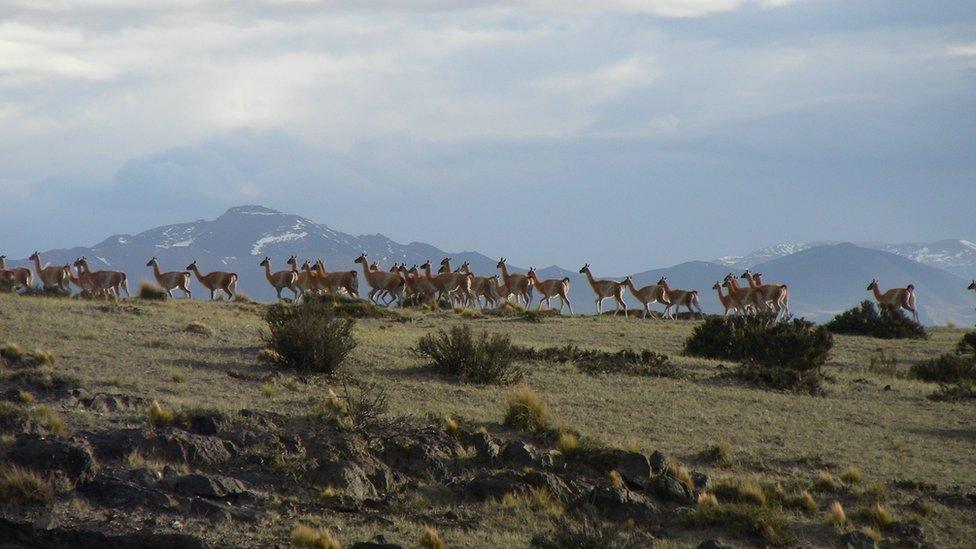
Guancos migrating to winter range in Payunia reserve, Argentina
The international team who created the global map have partnered with the United Nations to create the Global Initiative for Ungulate Migration (GIUM).
This brings countries and wildlife experts together to address the conservation needs of migratory species and their habitats around the world.
Scientists hope the new atlas will help governments and local communities plan ways to prevent roads and fences from blocking migration routes and spark conservation action around the world.
There's also been other initiatives to protect mammal migration based on the mapping of migrations.
The global atlas is a very important initiative that will help further the conservation of these unique animals.
Under the CMS Central Asian Mammals Initiative (CAMI), guidelines were developed to remove barriers to migration along the Trans-Mongolian Railway or make existing infrastructure more wildlife-friendly for species such as the Asiatic wild ass, Mongolian gazelles, and Goitered gazelles.
Also, in the US the Path of the Pronghorn became the only protected wildlife migration corridor in the country.
Speaking about the success of other conservation efforts, WCS Scientist Joel Berger said: "Around the world, actions such as protected-area expansion, road-crossing structures, and working-lands conservation initiatives have been catalyzed by tracking the actual migration routes of the herds."
- Published6 May 2021

- Published6 May 2021
